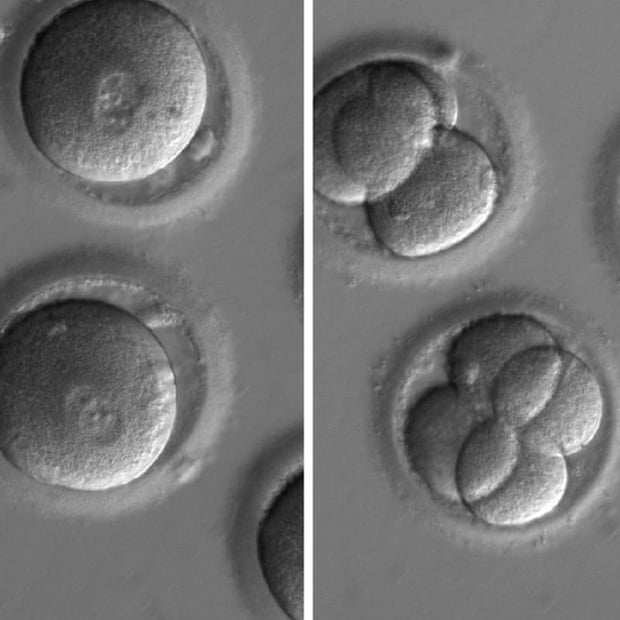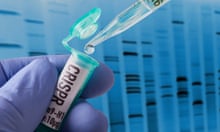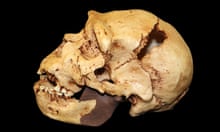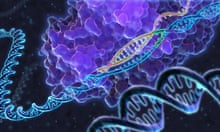Gene editing to correct faulty DNA in human embryos has taken a step closer to becoming a reality, with scientists showing it is possible to correct genetic problems in mice before they are born.
Researchers used a form of the gene-editing tool Crispr-Cas9 to introduce a mutation into a gene that would otherwise cause lethal liver failure in mice. While the approach has previously been shown to work in mice after birth, the latest study showed it was also possible to make the all-important tweak before they were born.
However the scientists stressed it will be some time before such an approach would be ready for use in humans.
“This is a very proof-of-concept study – it is the initial study, there are a lot more studies in mouse models as well as large animal models that need to be done before even considering doing this clinically,” said Dr William Peranteau, a paediatric and foetal surgeon at the Children’s Hospital of Philadelphia who co-led the study.
Q&AWhat is Crispr?
Show

Crispr, or to give it its full name, Crispr-Cas9, allows scientists to precisely target and edit pieces of the genome. Crispr is a guide molecule made of RNA, that allows a specific site of interest on the DNA double helix to be targeted. The RNA molecule is attached to a bacterial enzyme called Cas9 that works like a pair of 'molecular scissors' to cut the DNA at the exact point required. This allows scientists to cut, paste and delete individual letters of genetic code.
In October 2020, Emmanuelle Charpentier and Jennifer A Doudna were awarded the Nobel chemistry prize for their work on it – the first time that two women have shared the prize.
Even if the approach were eventually applied in humans, it would not be used for the majority of genetic disorders, Peranteau said. “The ideal disease to treat with this approach would be a disease that causes significant morbidity or mortality before or shortly after birth and for which there is currently not a very good treatment,” he said.
Writing in the journal Nature Medicine, a team of researchers in the US report how they conducted a series of experiments to explore the use of gene editing in mouse foetuses using a modified form of Crispr that can alter single “base pairs” – the molecules that couple up to form the rungs of the DNA double helix – but only cuts one strand of DNA when making a change. “In theory it is safer and avoids a lot of the concerns that have recently been published about standard Crispr,” said Peranteau.
After showing it was possible to make a change at a particular spot in the DNA of liver cells in mouse foetuses, the team focused on a condition known as hereditary tyrosinemia type 1. This is a genetic disease that prevents the body from breaking down an amino acid called tyrosine as it should, and can cause death if left untreated.
“The incidence in humans is about 1 in 100,000,” said Peranteau, adding that while drugs are available for this particular condition, other liver diseases could be good candidates for the treatment.
The team took mice with a genetic mutation that produced a similar condition to hereditary tyrosinemia type 1 and bred them, with the mothers kept on a drug called nitisione. The team then injected 26 of the foetuses with a virus carrying the genetic instructions for making the gene-editing tool, and 27 of them with the same virus but without information for the tool.
After birth the baby mice no longer received the drug, and the team watched what happened.
“In the non-treated mice, they all died by 21 days of life,” said Peranteau. However, those that had been treated were able to survive until the end of the study at three months, and looked very similar to another group that had not been injected with anything and were kept on the drug. No gene editing was seen in the mothers who had given birth to the mice.
Robin Lovell-Badge, head of the division of stem cell biology and developmental genetics at the Francis Crick Institute in London, welcomed the study.
“These are important proof-of-principle experiments that suggest that genetically inherited liver diseases might be avoided by correcting a defect before the effects of the mutation will have compromised liver function in the newborn child,” he said.
He added that it was important the treatment takes place before the immune system is mature enough to recognise the viruses used as foreign, meaning it does not work to block them.
Lovell-Badge also said the base editing methods “are particularly exciting, because up to 50% of inherited mono-genetic diseases (where the defect is due to a mutation in a single gene) are due to single base-pair substitutions.”
But he added: “It should be stressed that this is a study conducted using mice. The translation of any gene therapy approach to human foetuses will pose significant challenges.”










